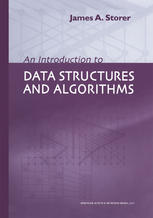

Most ebook files are in PDF format, so you can easily read them using various software such as Foxit Reader or directly on the Google Chrome browser.
Some ebook files are released by publishers in other formats such as .awz, .mobi, .epub, .fb2, etc. You may need to install specific software to read these formats on mobile/PC, such as Calibre.
Please read the tutorial at this link: https://ebookbell.com/faq
We offer FREE conversion to the popular formats you request; however, this may take some time. Therefore, right after payment, please email us, and we will try to provide the service as quickly as possible.
For some exceptional file formats or broken links (if any), please refrain from opening any disputes. Instead, email us first, and we will try to assist within a maximum of 6 hours.
EbookBell Team

5.0
28 reviewsData structures and algorithms are presented at the college level in a highly accessible format that presents material with one-page displays in a way that will appeal to both teachers and students. The thirteen chapters cover: Models of Computation, Lists, Induction and Recursion, Trees, Algorithm Design, Hashing, Heaps, Balanced Trees, Sets Over a Small Universe, Graphs, Strings, Discrete Fourier Transform, Parallel Computation. Key features: Complicated concepts are expressed clearly in a single page with minimal notation and without the "clutter" of the syntax of a particular programming language; algorithms are presented with self-explanatory "pseudo-code." * Chapters 1-4 focus on elementary concepts, the exposition unfolding at a slower pace. Sample exercises with solutions are provided. Sections that may be skipped for an introductory course are starred. Requires only some basic mathematics background and some computer programming experience. * Chapters 5-13 progress at a faster pace. The material is suitable for undergraduates or first-year graduates who need only review Chapters 1 -4. * This book may be used for a one-semester introductory course (based on Chapters 1-4 and portions of the chapters on algorithm design, hashing, and graph algorithms) and for a one-semester advanced course that starts at Chapter 5. A year-long course may be based on the entire book. * Sorting, often perceived as rather technical, is not treated as a separate chapter, but is used in many examples (including bubble sort, merge sort, tree sort, heap sort, quick sort, and several parallel algorithms). Also, lower bounds on sorting by comparisons are included with the presentation of heaps in the context of lower bounds for comparison-based structures. * Chapter 13 on parallel models of computation is something of a mini-book itself, and a good way to end a course. Although it is not clear what parallel